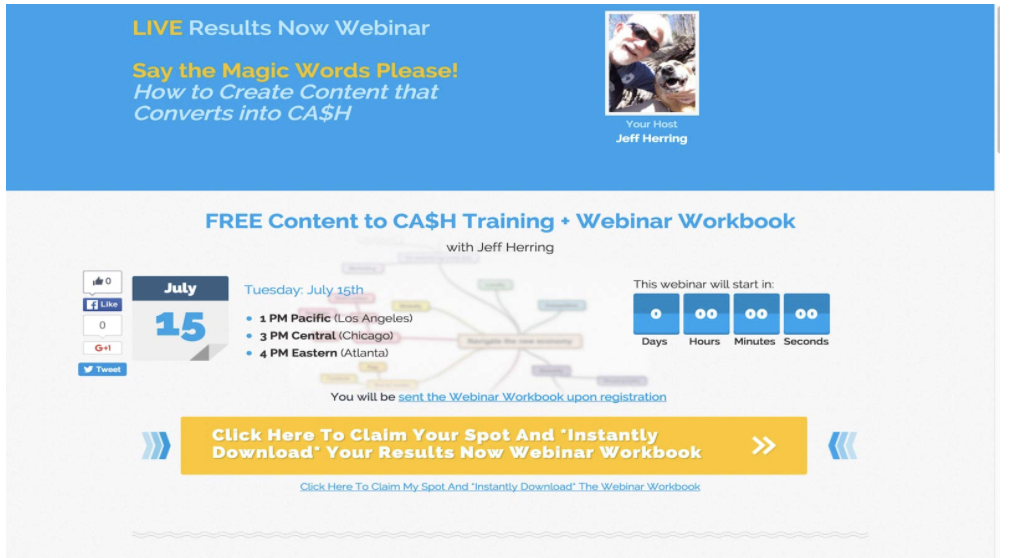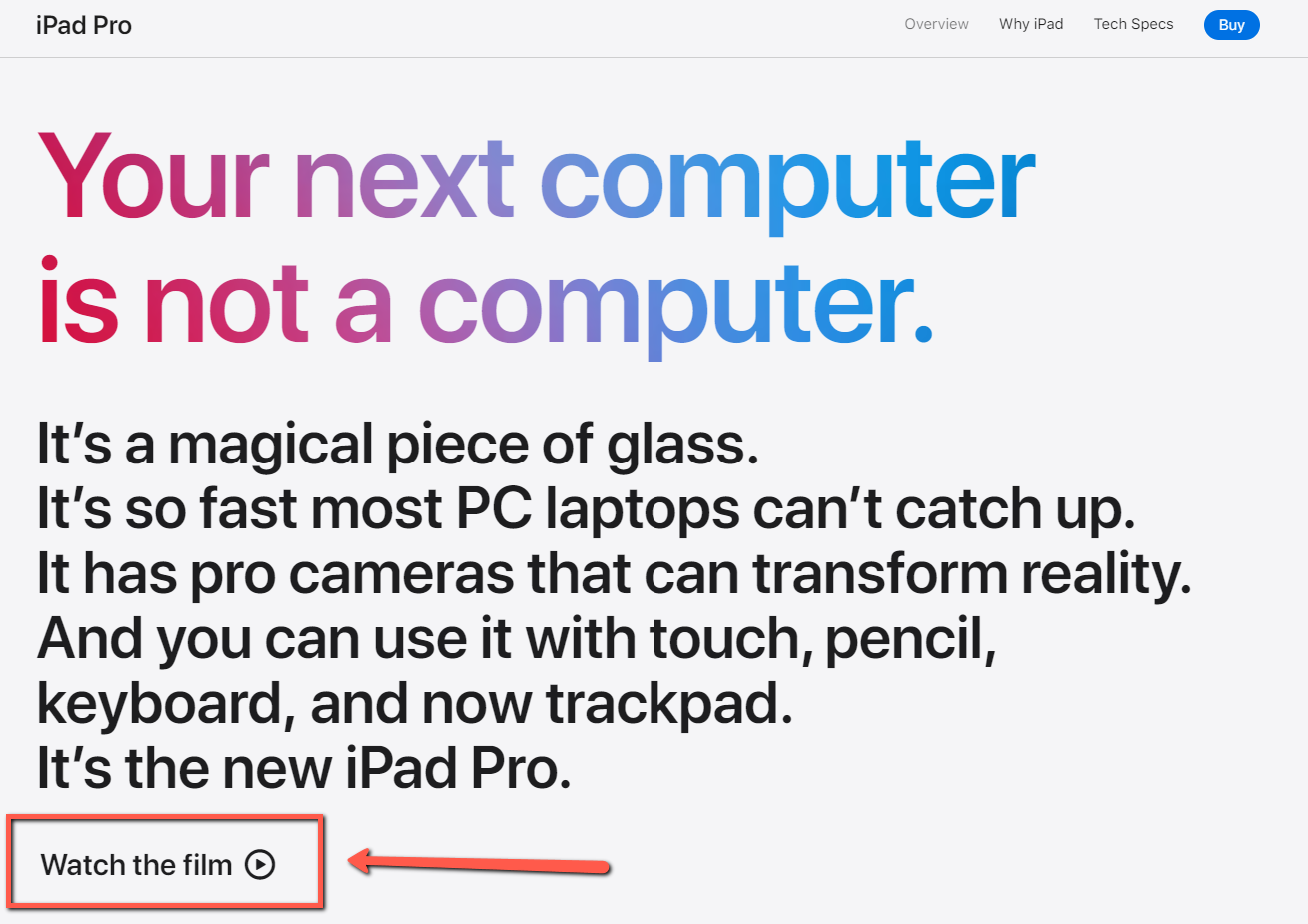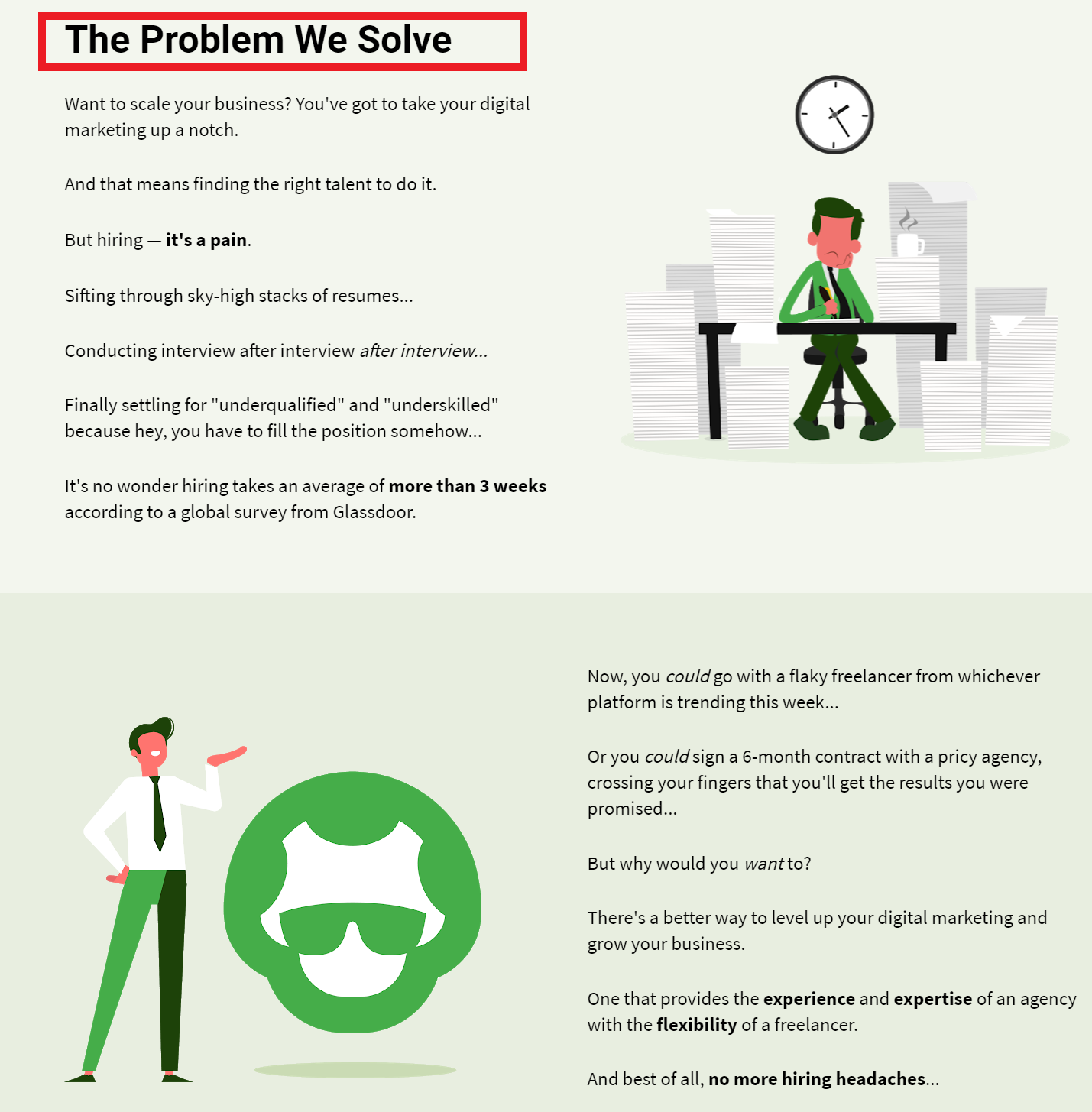7 Proven & Time-Tested Copywriting Formulas to Convert Leads
Writing high-converting copy is a lot like building with Legos.
You can completely ignore that fat book of instructions inside your box set of Legos.
You can pour out all the pieces and try to figure out on your own how the heck all of those blocks are supposed to turn into the Millenium Falcon.
And it probably won’t look anything like the spaceship on the cover by the time you’re finished with it.
The same thing happens with your copy.
If you want it to convert, then your best bet is to follow the steps in a proven copywriting formula
And that’s exactly what a copywriting formula is—instructions for creating copy that converts more leads.
In today’s resource, I’ll share:
- The 7 high-converting copywriting formulas I’ve tested myself and that have helped me boost conversions.
- Real-life examples of big-name companies like Apple and Casper that use the exact same copywriting formulas.
- Plus you get to copy Growbo’s copywriting formulas templates.
All you need to get started is to answer the following question for yourself...
In a rush? Want to download this article as a PDF so you can easily take action on it later? Click here to download this article as a PDF guide.

Why Do I Need a Copywriting Formula to Convert More Leads?
On the one hand… you don’t!
Working off of a copywriting framework isn’t required for creating a solid copy.
And it isn’t required for accomplishing the task that your copy is made for: getting that sweet, sweet sale.
However, copywriting formulas certainly help you remove some of the guesswork from the equation.
Whether you’re just getting started as a copywriter or you’ve just hit a wicked case of writer’s block, a copywriting formula gives you that oh-so-important guidance to keep those keys clacking and those prospects converting into customers.
Essentially, it makes copywriting easier.
And it gives you the direction you need to make your copy as high-converting as possible.
Plus, when you find a copywriting formula that converts, you can template out your copy so the next time you need to write something similar, it’ll take you half the time to do it.
On top of that, there are copywriting formulas out there for everything—from tweets and pop-up ads to whitepapers, email campaigns, and long-form sales pages.
Now, let’s get into the copywriting formulas you can start using today to boost conversions.
Copywriting Formula #1: The Copywriter’s Go-To: AIDA
Any copywriter worth their salt knows this copywriting formula.
So, what does AIDA stand for?
And how does this copywriting formula apply to the real-world example from Apple below?
- Attention – Start with an attention-grabbing headline or intro paragraph. In the Apple sales page section below, you can see how they grab the reader’s attention with “Your next computer is not a computer.” It’s highlighted and it creates intrigue (wait, how is my next computer not a computer?).
- Interest – The next idea to hit is to build interest. Listing out features is one way to build that interest and that’s exactly what this example does. It also uses fantastical language (magic, transform reality) to get the reader engaged.
- Desire – This one is a bit trickier. Desire is built on showing consumers how your product solves your readers’ problems. And in this example, it’s a bit mushed together with interest.
First off, it’s faster than most PC laptops but it’s even smaller (more portability). And second, it is highly compatible with other products like pencils, keyboards, and a trackpad. So in that way, it’s overcoming one of the original obstacles of the iPad—limited compatibility and functionality.
- Action – And finally, there’s the call-to-action.
What do you want your visitors to do? Call it out! And as you can see, Apple did just that by placing the CTA to “Watch the film” right below the other copy.
Copywriting Formula #2: PAS
This is another core copywriting formula used daily by professionals. PAS is as effective as it is simple.
And in fact, we at Growbo use it every single day, even in our own landing pages.
Have a look below to see a quick breakdown of the points as well as an example of our own use of PAS on our homepage page.
- Problem – Get in touch with your audience by calling out the specific problem your product or service solves. As with other formulas, the more concrete the examples in your copy are, the more they’ll resonate with your readers. In fact, stating "the problem" grabs nearly 50% more sales according to one of our case studies from the Proven Sales Conversion Pack.
- Agitation – Once you’ve zeroed in on the problems your audience is having, really make them feel those problems by agitating them. In other words, make them hurt a little. “Spending too much time on your marketing? Just think about all the time you're wasting away from your friends and family.” Get the point? Don’t be mean here necessarily. Just really drive the point home so that the next step is even more impactful.
- Solution – After sufficiently “twisting the knife,” it’s time to reveal the ultimate solution to their problems. And—surprise!—that solution is exactly what you’re selling. Make the connection between the problem and your solution obvious with transition statements like “That’s why we created…”
Copywriting Formula #3: 11-Point Sales Page Master Formula (Growbo’s “Secret” Weapon)
When it comes to sales pages, we’ve developed our own unique copywriting formula to help our clients get the best results possible.
It’s so effective, in fact, that we call it the “Master Formula.”
A bit dramatic, sure.
But it’s highly effective and, of course, comes highly recommended by us.
If you want to see how we’ve applied this formula to our clients’ pages, check out our work here.
Alright, let’s give the Master Formula a look and see real-life examples of each step on a page we built for one of our clients.
1. Headline

Explain the single, most important thing to take away from the product.
Be sure to favor clarity over cleverness here.
And try to tap into a visual language, make your claims concrete rather than abstract, and add some personality to the mix.
But above all, follow the best practices for creating an engaging and high-converting headline.
2. Pain Points

Dedicate this section to pointing out the pain points your audience most likely experiences related to not having your product.
That way, you can build trust and empathy with your readers.
This and the next two sections are built on the PAS model talked about above.
3. Agitate Pain Points

With the pain points established, it’s time to figuratively “twist the knife” a bit.
Really dig into why those pain points hurt.
Try to paint a future where they aren’t solved and what happens as a result.
4. Solution Statement
Now, after all that pain and agitation, it’s time to reveal the solution: your product or service!
Make sure this headline is eye-catching and gets to the heart of what you are bringing to the table.
Again clarity (one of the Laws of Sales Funnel Physics) should be a priority here.
5. Benefit/Feature List
Once you’ve shown readers what your solution is, it’s time to tell them why it’s the solution by listing the features and benefits.

This section can follow the BAF model (more on that later).
Or, and this is what we recommend, it can follow the BFA model: Benefit first, Feature second, Advantage last.
That way, readers are instantly shown how this feature applies to them rather than having to read through more copy to see why they should care.
6. How It Works

Nothing special here: give a brief rundown of how your product or service works.
But try to keep it separated into 3-5 simple steps (e.g. 1: Book a Call, 2: Tell Us About Your Project, 3: We Get to Work & Deliver the End-Product in a Few Days).
7. Social Proof
Lay your social proof on thick here.
Testimonials, user reviews, trust badges, vanity stats—anything you have in your arsenal to build authority, use it here (and peppered throughout) to win over your audience’s trust.

Another way that you can improve the trust that your page conveys is by using what’s known as “borrowed” social proof.
Basically, using hard statistics from other trusted sources (in this case Deloitte) actually bolsters your own credibility at the same time.
And when you combine that with the vanity stats in the first section (“combined experience of over 40 years” and “worked with 93 satisfied clients”), you’ve got a great social proof section that’ll drive visitors to click that CTA.
8. Price Anchor
Price Anchoring is one of the most valuable tools in a copywriter’s toolbox.

Immediately set an expectation for a similar product/service or the cost of not solving a problem and then smash those expectations with your lower price.
9. FAQs
An FAQ section is your chance to directly address your audience’s objections.

And when you do so effectively, you’re removing another barrier for them turning into a loyal customer.
That being said, you’ve got to know how to write a well-made FAQ section if you ever want to see the massive benefits.
10. Risk Reversal
A Risk Reversal is designed to take away all the risk from ordering your product or signing up for your services.

Some examples of Risk Reversals are 30-day money-back guarantees, free trials, free benefits (“if you don’t love our product, just let us know and we’ll refund your purchase and you get to keep the extra bonus!), or a free consultation call as with the example above.
11. CTAs + Testimonials
Last but not least, it’s important to sprinkle in plenty of testimonials and CTAs throughout your sales page.

Don’t go crazy with it of course.
But for sales pages that are usually around 1500-1700 words, we typically like to include about 4 CTA sections (beginning, after benefits/features, after price anchoring, and at the end) as well as about 3 testimonial sections.
On top of that, be sure to include faces in your testimonials as much as possible.
Doing so helps you connect with your readers and boost your conversion rate even more.
Copywriting Formula #4: AICPBSAWN
I included this one almost exclusively because of how ridiculous it is.
I mean, 9 letters in an acronym?
That’s a bit much, don’t you think?
And on top of all of that, it isn’t even that memorable except for the last half.
In any case, a good chunk of professional copywriters swears by its high-converting power.
And who knows, maybe it’ll be exactly what your unique audience is looking for.
Worth a try at least!
- Attention – Snap your readers out of it! Grab their attention with a big benefit of your product that solves a big problem they might be suffering from.
- Interest – Garner some interest from your audience by telling them what they stand to gain from listening to what you have to say.
- Credibility – Keep the ball rolling by demonstrating your credibility. Expert on the topic? Inventor? Someone who has extensive experience? Let your audience know.
- Proof – Point to hard proof of why your product or service solves the problem of your audience. No empty claims here.
- Benefits – List out all the benefits of your product or service. Make sure they’re audience-oriented and concrete, not abstract.
- Scarcity – Perk up your audience’s ears with scarcity tactics like “limited time offer”, “first 5 applicants only”, or placing a deadline on signing up.
- Action – Tell them, in blunt and easily understandable terms, what they should do. Make sure your CTA is clear above all else.
- Warn – Paint a picture of what will happen if they don’t sign up, buy, or opt in (and make it bleak).
- Now – And again, motivate them to take action now. Like… right now.
Copywriting Formula #5: BAF
This formula is perfect for the benefit/feature section of your long-form sales or landing page.
Plus, it’s extra simple, so you won’t have a hard time recalling the steps when you’re in a crunch.
Let’s look at an example of BAF used on a Casper mattress page to help break these steps down one by one.

- Benefits – List out the reader-focused benefits and make them concrete. Here, it’s the ability to stay cool at night and, therefore, stay asleep.
- Advantages – List out the advantages and why it works better than the competition. The thing that separates it from other mattresses and makes it work better is that air-flow perforations and a heat-wicking, wool-infused cover make it easier to stay cool.
- Feature (or intro) – Start by calling out the specific feature of your product. What’s the feature here? It’s “our coolest design.” In fact, emphasizing benefits produces 16.2% more qualified leads daily according to one case study analyzed in our Proven Sales Conversion Pack.
Copywriting Formula #6: VACUUM (Growbo’s Awesome Email Campaign Formula)
To be honest, this one holds a special place in my heart.
Why? Because it’s the exact formula we at Growbo use in our own email campaigns we build out for clients.
That’s right: if you ever wanted a peek behind the scenes of our copywriting process, now’s your chance!
Now, the email VACUUM formula below is designed for a 6-email campaign sequence and if you’re starting out your email sales funnel.
Such a sequence allows for the maximum nurturing of prospects.
And as you know, proper nurturing of your leads is the key to getting them to buy, call, or opt-in.
That being said, this formula can also be used for shorter sequences too (trust us: we do it all the time).
Instead of covering all 6, you can use just the first 3—turning it into the VAC formula rather than VACUUM.
It all depends on your unique goal, product, and audience.
In any case, here’s the complete formula for your reference.
And when you use it right, you’ll capture all the benefits and conversions we get from using it too.
Email #1: Value
Let your prospects know why they should listen to you.
What’s the value you’re offering? What’s the problem your product or service solves? And how can it improve their lives?
Telling an immersive story here is not only a great way to hook your readers in.
It’s also a highly-effective copywriting tactic used by the best professionals in the biz.
Email #2: Authority
Let your prospects know why they should listen to you.
Don’t miss the emphasis here.
Most markets are flooded with products and services that look strikingly similar.
It’s called competition.
And your goal in email #2 is to point out what makes you different from those other guys.
Testimonials, review stats, years of experience, accreditations, trust badges, accomplishment milestones, and other forms of social proof should be your main form of ammunition here.
And you may be pleasantly surprised at how well social proof like this works.
For instance, one case study in our Proven Sales Conversion Pack found that adding trust badges to a landing page led to a 32% increase in sales conversions.
Check out below how easy it can be to do so.
Before

After

Email #3: Call-to-Action
Get to the pitch!
You’ve sufficiently warmed up prospects with the past two emails.
Now it’s time to hit them with the hardsell.
Be clear. Be blunt.
And present your best offer without beating around the bush.
Present your well-written and high-converting CTAs 2-3 times throughout the email.
But do it without being smarmy.
Because you certainly don’t want to dash your trustworthiness, especially since you’ve still got 3 more emails going out to your readers after this one.
Email #4: Unique
This one is a bit of an extension from Email #2 but it has a bit of a different twist to it.
You’ve established you’re an authority already.
But what makes your product or service truly unique?
Uniqueness sells.
Skittles knows it. Tesla’s Cybertruck knows it.
And the burgeoning bidet brand Tushy knows it.
So, how do you stand out from the crowd?
Let your readers know here.
Email #5: Urgency
Ah, FOMO.
Copywriters love it.
Humans are driven by it.
And only the most at-peace Buddhist monks have overcome it.
The Fear Of Missing Out is a practically universal desire to capture a benefit before it goes away forever.
And it’s just one of the many email marketing psychology hacks that get your readers to click.
In fact, we found in our Proven Sales Conversion Pack that investing less than 30 mins into increasing the sense of urgency can lead to conversion upticks of 44%.
Check it out.
Before

After

The second page received a whopping 44% higher conversions.
The secret?
The date and time were positioned above the fold where people could see it more easily (urgency point #1) and there was a prominent countdown timer (urgency point #2).
Now, in Email #5 your goal is to really dig into FOMO.
Is your client list filling up fast? Available while supplies last? Closing your doors in just 2 days?
Shout it out!
Because when people know their window of opportunity is closing, they’re bound to act faster than ever.
Email #6: Make a Decision!
Last but certainly not least, it’s time to push things one step further.
Because in Email #6, you’re going to ask readers to make a decision.
Urgency and scarcity all come into play in this email as well.
But here, you’re going to get especially blunt about it.
Ask them to actually make a decision here.
Tell them that time is running out. And in all likelihood, this may be their last chance to take advantage of what it is you’re offering.
And don’t forget to follow the Law of Repetition here.
Ask for the sale once, twice, and then thrice.
You may feel like you’re being obnoxious.
But this is crunch time. And this is when you need to buckle down and put your sales pants on to close the deal.
Copywriting Formula #1: 7. Egner’s 9-Point Sales Letter Copywriting Formula
While sales letters may seem like copywriting from a bygone era where people actually buy from direct mail solicitations, the truth is digital marketing has a lot to learn from this type of long-form copy.
And in fact, tons of products, especially in the affiliate marketing industry, use this same format for their sales page—“dear” and “from the desk of” included.
Famed copywriter Dan Kennedy, for instance, uses this form on his own “Magnetic Marketing Fast Implementation Boot Camp” page.

Source: Magnetic Marketing Fast Implementation Boot Camp
You can’t argue with the market.
Now, one formula to follow for writing a sales letter that gets your audience reading and clicking “Add to Cart” is copywriter Frank Egner’s 9-point formula, fleshed out in detail below.
- Open with an eye-catching headline (or the first paragraph) that gets your reader’s attention and sparks the flames of desire.
- Follow up with an inspirational lead that moves into the product.
- Clear solution statement that defines what the product is, what it does, and why your readers need it.
- Point to a success story that highlights how a past user’s life has changed because of it.
- Highlight some especially flattering testimonials and endorsements.
- List out the special features of the product (bullet-point format works great here).
- Present a value statement to the reader (why does this matter, specifically, for your reader? And how will their life be different after using it?).
- Make sure your copy is highly specific, action-oriented, and pushing your client urgently towards clicking your CTA.
- End the letter with a postscript (P.S. – Postscripts aren’t reserved just for high-converting emails).
Conclusion
Download the “7 Proven & Time-Tested Copywriting Formulas to Convert Leads” so you won’t forget to take action on it later. Click here to download it now.
So there you have it!
7 copywriting formulas to convert. You can start using them today to up your conversions and start bringing in sales.
The formulas I pointed out (and you shouldn’t forget) are:
- AIDA
- PAS
- Growbo’s Master Formula
- AICPBSAWN
- BAF
- Growbo’s VACUUM
- Egner’s 9-Point Sales Letter Formula
And with the help of these, you never have to sit in front of a blank screen wondering where the heck you’re supposed to start writing your copy.
And if you need help with your copywriting or any digital marketing task, Growbo is here for you.
We can take all of your digital marketing tasks off your plate.
Or if you prefer, you can also order any productized service from our Marketplace like Email Sequences, Custom Lead Magnets and Sales Pages, Facebook Retargeting Ad Campaigns, and more.
Now tell me something, which ones of these formulas are your favorite? Which have you used and seen results with? And which formulas not on this list do you follow?
Let me know in the comments below.
And as always…
Keep Growin’, stay focused.
























